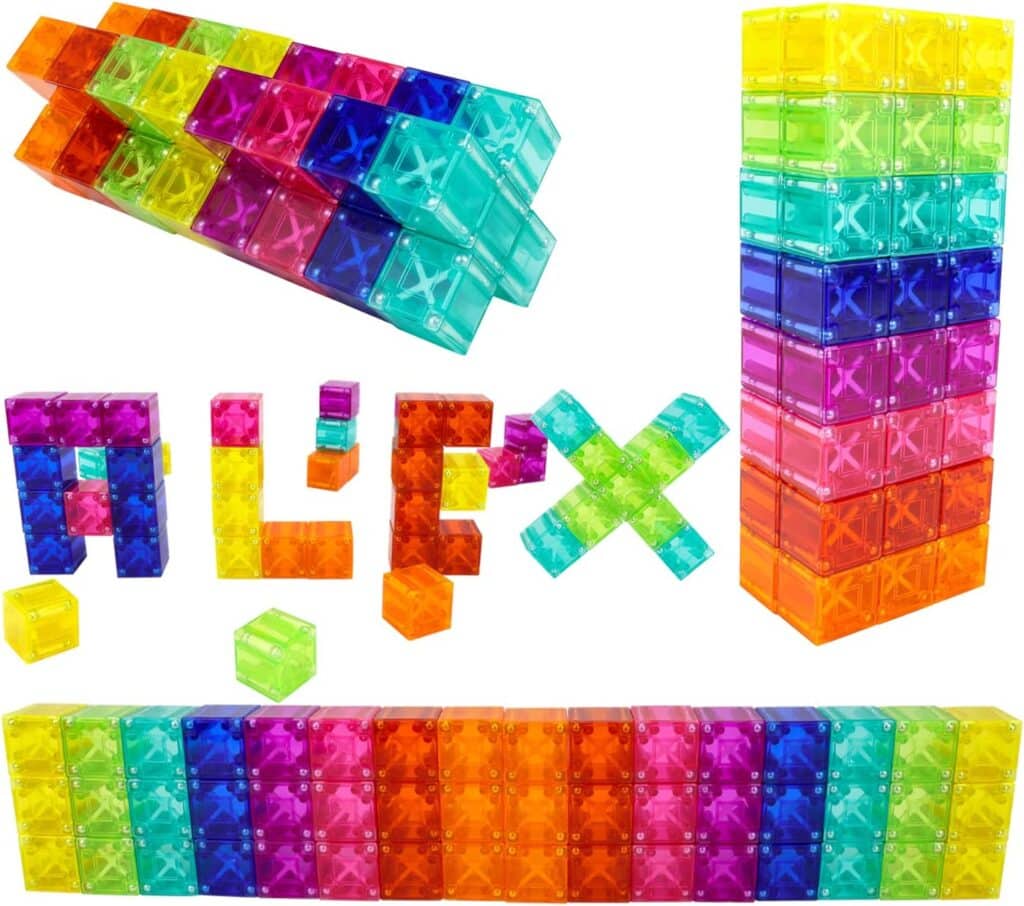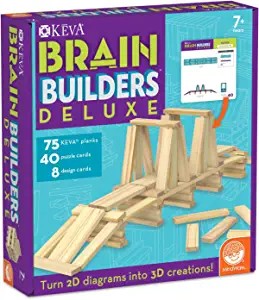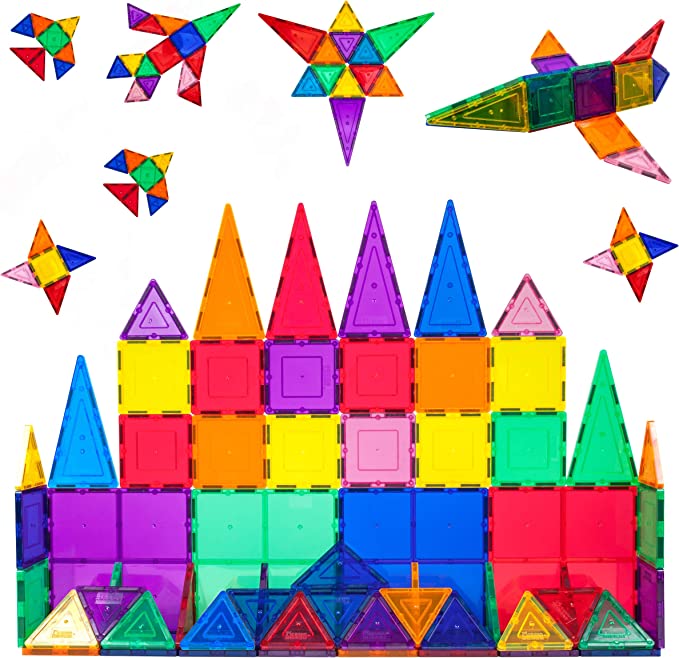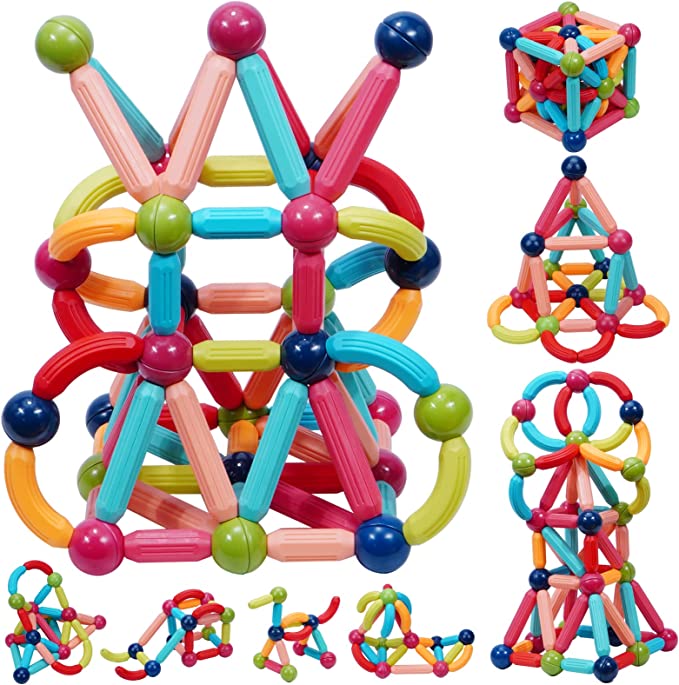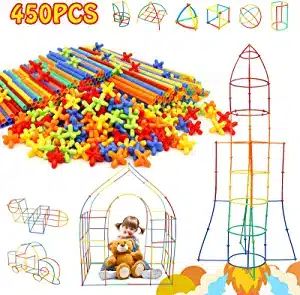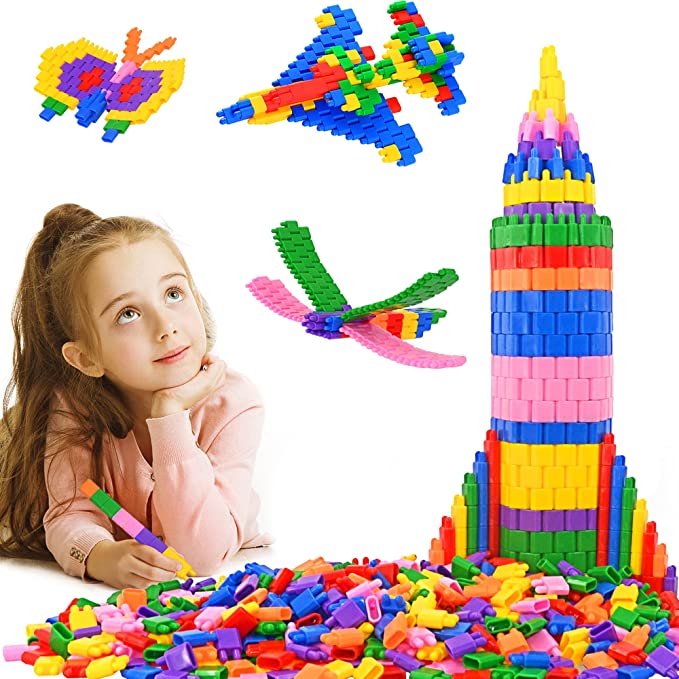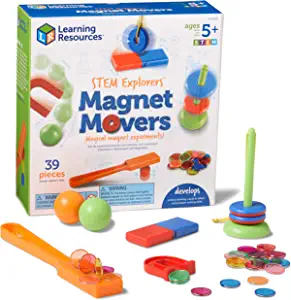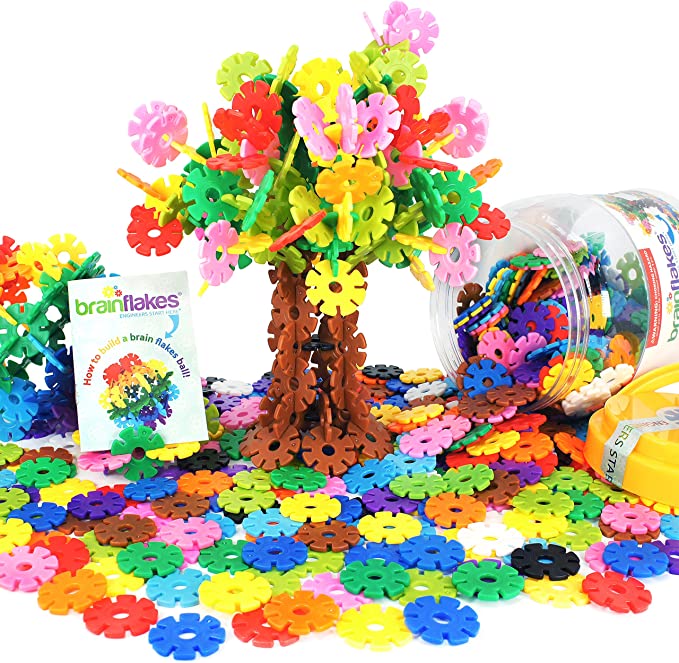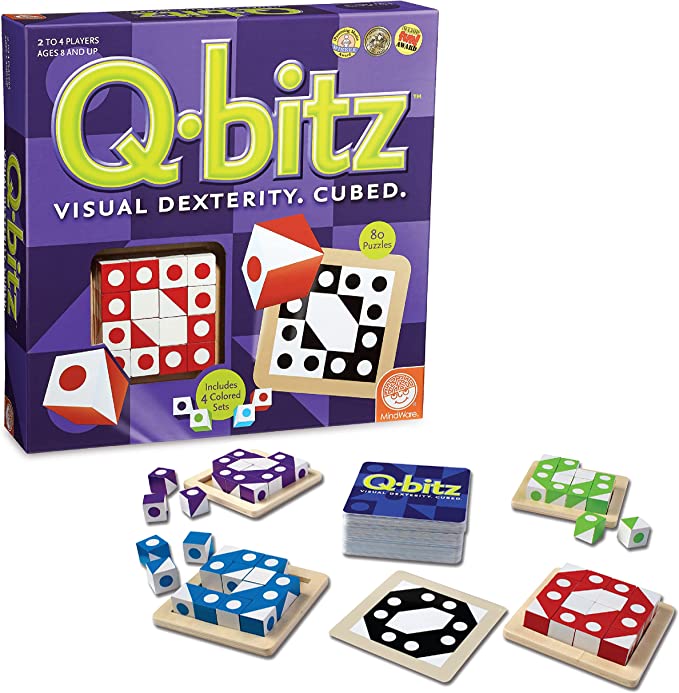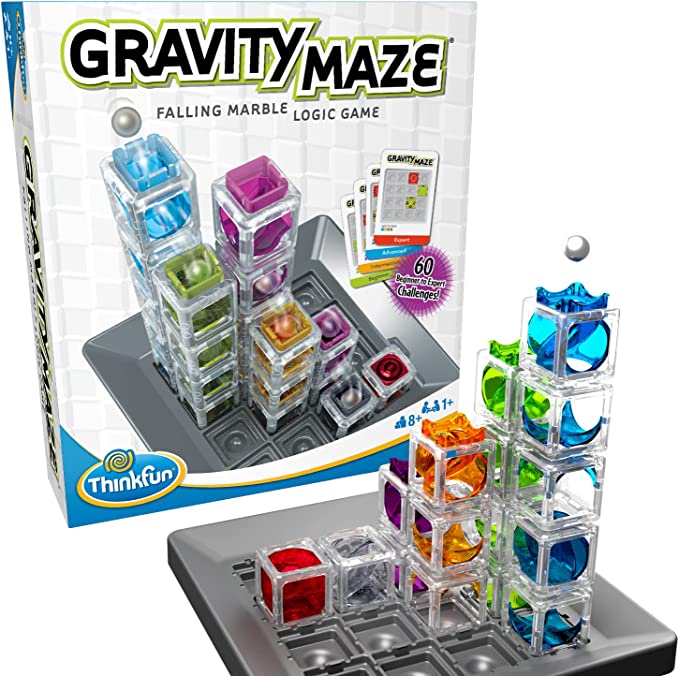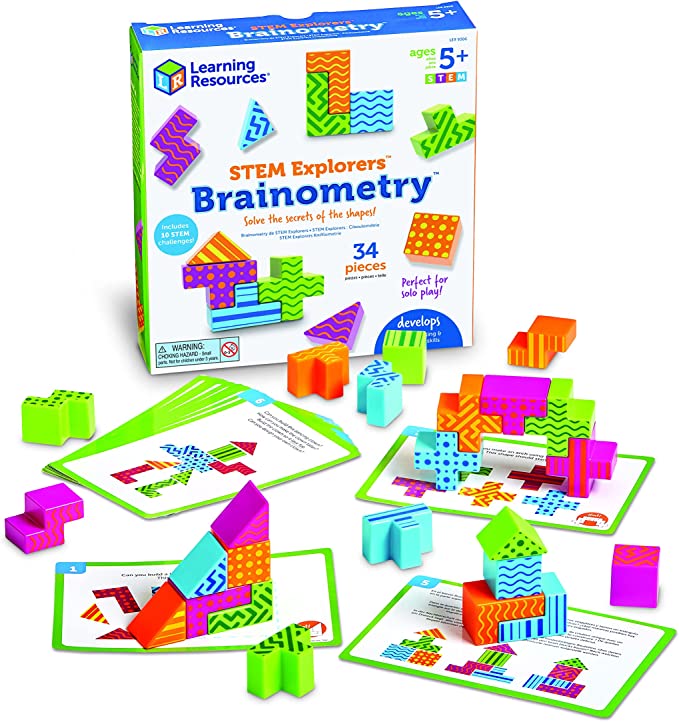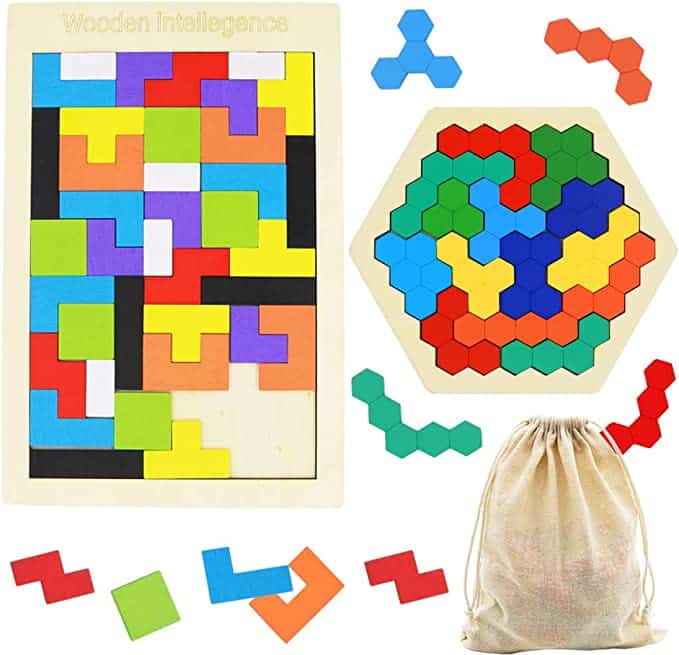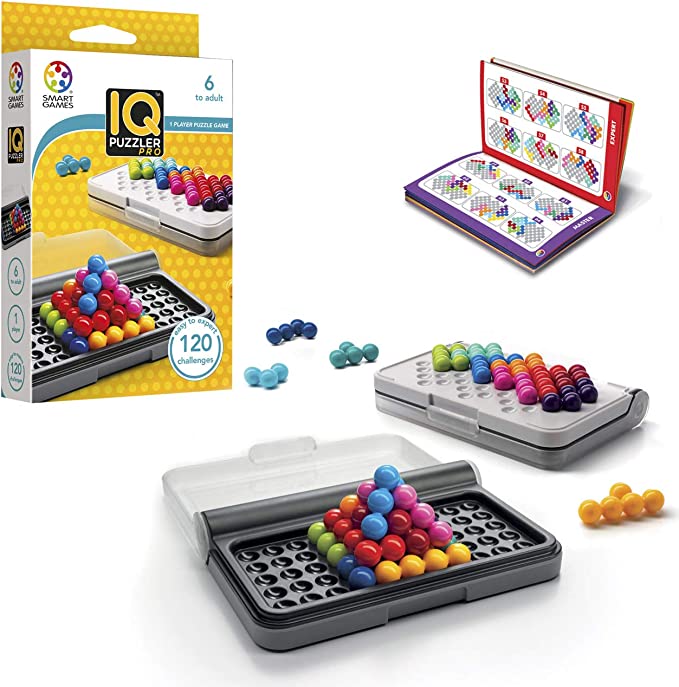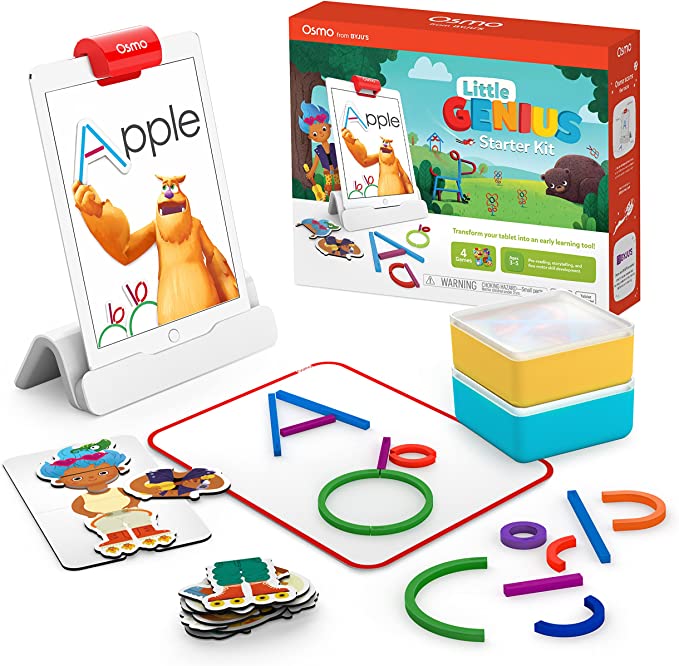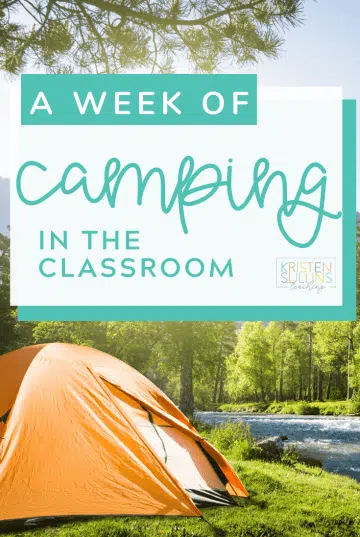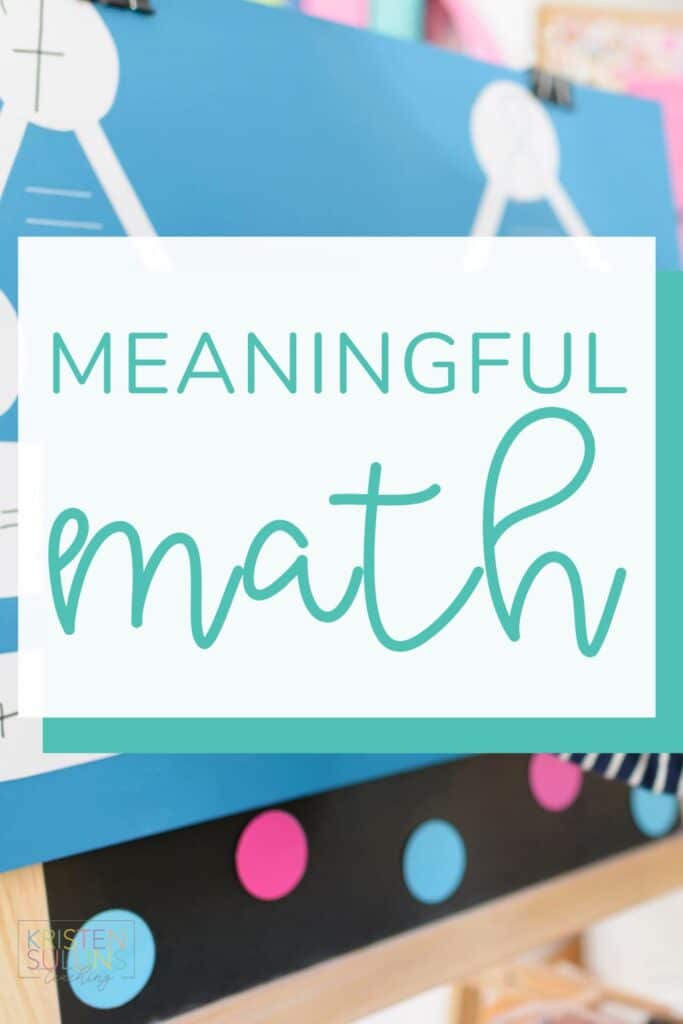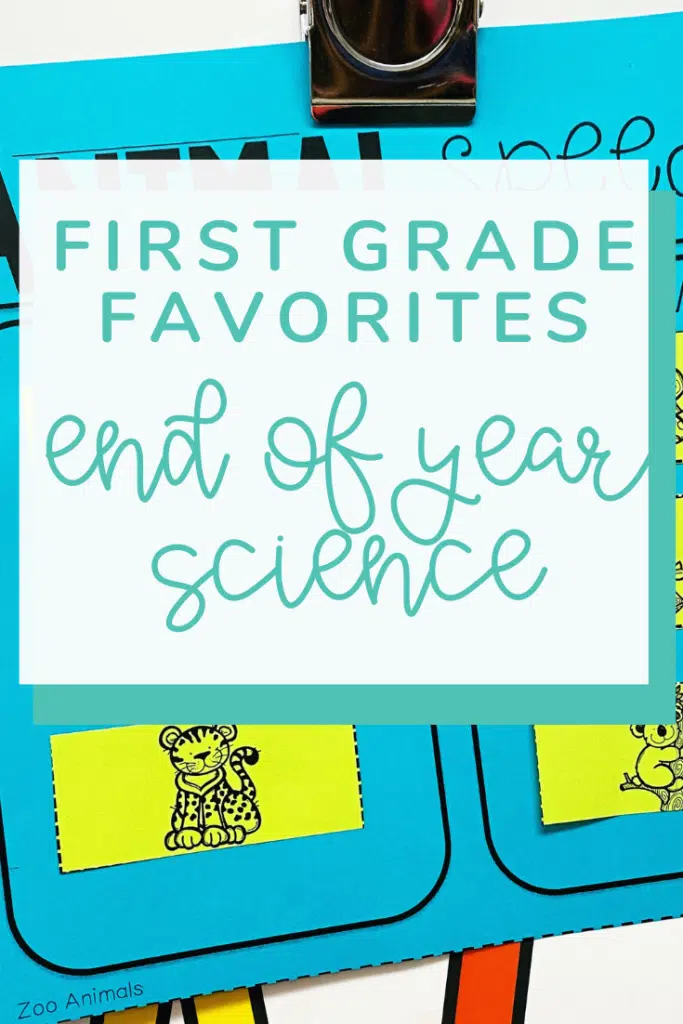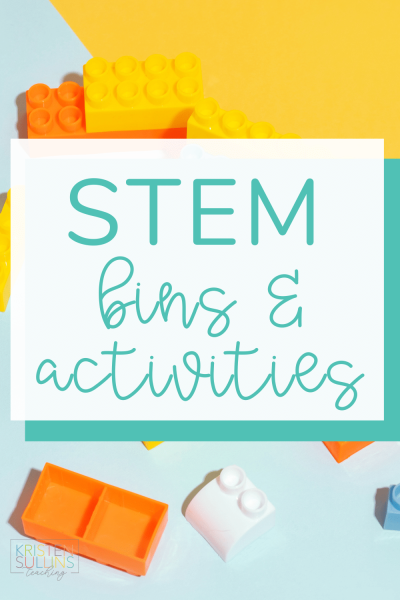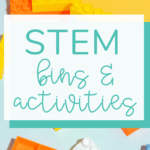STEM bins seem to an educational buzz word for the past five or so years. And maybe you’ve been a little reluctant to jump on the trend. Or maybe you love the idea but you just aren’t sure where to start.
If you haven’t tried STEM bin activities in your own first grade classroom, let me tell you right now, they are a LIFE SAVER with added benefits.
“STEM bins” refer to a wide variety of activities that help students build skills in Science, Technology, Engineering and Math. Stem bins are typically a box or bin with an activity that will help build students’ foundational skills in one of these four areas, but in a very fun, hands on and creative way! An added benefit is that they provide students with much needed brain breaks to maximize their learning potential in the classroom.
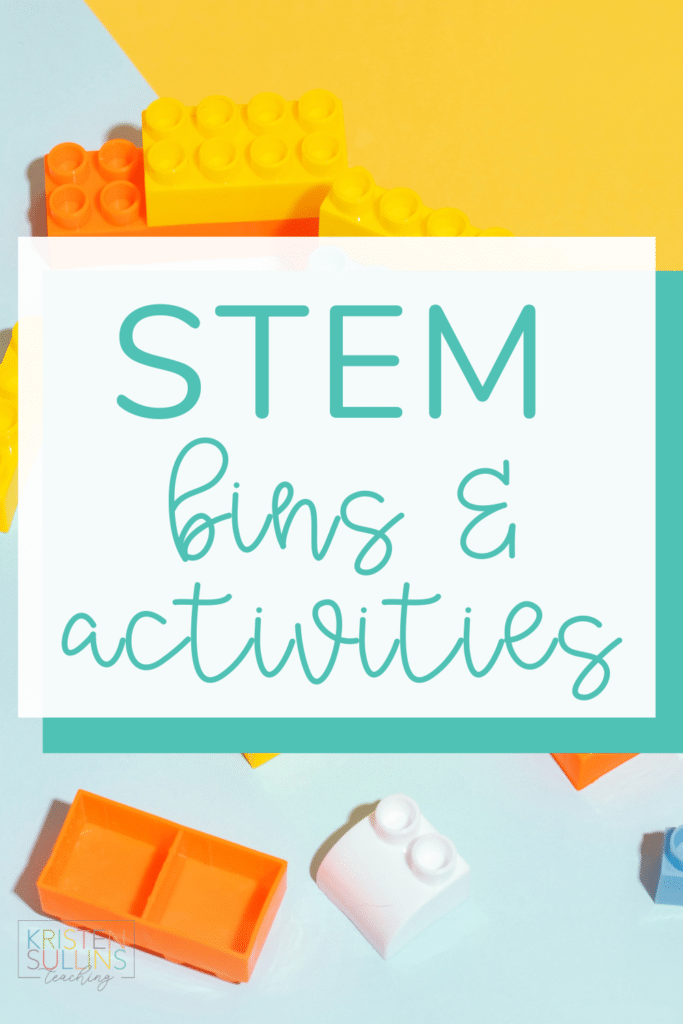
The Research behind STEM Activities
STEM activities are rooted in the concepts of math and science. They provide students a chance to practice problem solving and creativity through a hands on approach. Studies show that STEM activities provide short term learning boosts by helping students activate different parts of their brain.
In addition, these activities provide a confidence boost for students who may be struggling with classroom concepts, by allowing them to successfully build or solve a problem. There are also great sensory benefits for our students who need practice with fine motor skills.
STEM Bins Two Ways
I’ve used STEM bins in two very different capacities as an educator. For about five years, I used STEM bins in my first grade classroom as a teacher. I started small, but eventually integrated them into as many parts of our schedule as possible.
Yes, they are THAT good!
Later in this post, I’ll go into more detail about how I set them up, how I used them and even link up some of my students’ absolute favorites!
The second way that I used STEM bins is in my current position as Elementary Librarian. Our campus serves grades 1st – 3rd and my 3rd graders love them just as much as my 1st graders.
In the library, STEM bins serve two purposes. First, students who do not need intervention come to me for enrichment. I use STEM bins to help students build problem solving and engineering skills. STEM bins are a great tool for enrichment because there is very rarely a correct answer, there are normally dozens of different ways to use them!
As a librarian who was previously a teacher, I also recognized the need for more teachers to be able to use STEM bins in their classroom, but I also knew how much it can cost! So, I proposed the idea to my campus principal to purchase activities that teachers can check out for students to use in the classroom. It has been a huge hit to say the least! Teachers check 4-5 STEM activities at a time and then return them when their students are ready for something new. Students love the difference activities and teachers love the flexibility that it offers them without having to spend their own money!
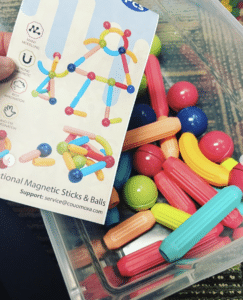
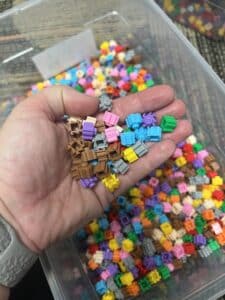
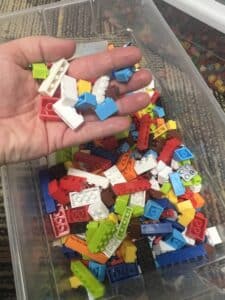
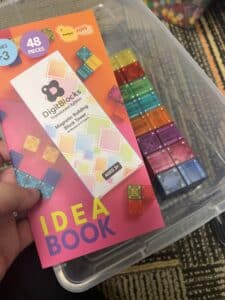
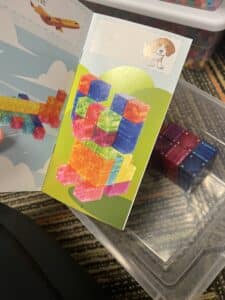
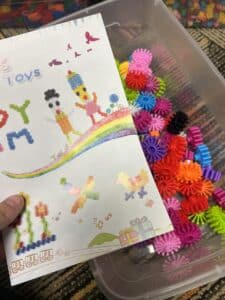

How to Set up a System for STEM bins
There are few things you need to determine when setting up a system of STEM bins for your first grade classroom:
- Where you will put them
- What will be in them
- When will students have access to them
Where you will put them – This step is as simple as clearing off a shelf. (Okay, if you classroom was anything like mine, then that was much harder than it sounds, but you get the idea). I had a shelf that I bought at a garage sale that was perfect for this!
I bought plastic bins from Dollar Tree so that all of my STEM activities were in the same kind of container. This shelf had enough room for 12 bins which was PERFECT for what I needed!
What will be in them – This step does not (and should not) have to be difficult or expensive. When I first started STEM activities in my first grade classroom, I started with things that I already had!
The easiest activities to start with are math manipulatives – unifix cubes, wooden blocks, links, tangrams, pattern blocks even place value sticks.
You can even add odd bits and pieces from your craft cabinet – pom poms, pipe cleaners, beads, etc.
After a little while, I slowly started adding some very cheap activities that I would find at either Dollar Tree or the Target Dollar bins. Dollar Tree has great sets of legos with base plates and hashtag blocks from the dollar bins at Target are another fan favorite! The great thing about STEM bins is that you can fill them with just about anything!
When will students have access to them – This step totally depends on your schedule. Remember, I started small. The easiest way is to add these as an “early finisher” activity which might help some of your students who are reluctant to get their work done in a timely manner!
These also make a great morning work activity because it will save you on copies and allow students to activate their little brains in a fun and creative way.
At our school, we also use STEM bins for WIN (What I Need) time. This is essentially our time for all scheduled pullouts: reading and math intervention, GT, ESL, etc. Students who do not have a pullout will either go the library for 30 minutes at a time or stay in the classroom.
This is how WIN time STEM worked in my classroom:
THE CLOTHESPIN STRATEGY
Okay guys, this is really riveting stuff… but I used clothespins to designate which student got to use which STEM bins for the day. I had 12 STEM bins, so I put one girl name and one boy name on each bin. For the first 30 minutes of WIN time, boys would be on technology and the girls would get to sit around the room and play with their STEM bin. After 30 minutes, the boys and girls would switch.
If you really want to control the noise level, you can mark places around the perimeter of the room were students can sit and play. This helps keep groups of students getting too big and too loud.
At the end of the student, one student was responsible for moving all of the clothespins to the next bin.
Why designate a STEM bin?
You honestly don’t have to. I did it for two reasons. The main reason: kids fight and argue over which bin they want, some will even turn in unfinished work so they can get to a STEM bin first. Using the clothespin system seemed to alleviate this, so we stuck with it.
The second reason is very simple: I wanted my students to try them all. First grade students (just like adults) like to stick with what they know. I wanted them to try new things and the clothespin system allowed us to do that.

How to Get STEM Bin Activities
Like I said earlier, STEM bin materials do not have to be expensive, they can come straight from your classroom. However, if you are looking for more, there are several different ways you can get money to purchase them:
- Local Education Foundations/Grants
- Websites like Donors Choose
- Amazon teacher wishlists
- Propose this idea to your campus principal
As far as WHERE to buy STEM activities, my best shopping experience online has been Amazon hands down!
My Favorite STEM Activities (with links)
As promised, here are links to my favorite STEM Bin activities that I used in my first grade classroom and also in my Elementary Library. (The following links include Amazon Affiliate links).

